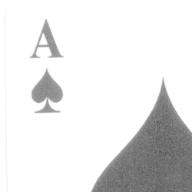Why are movies getting narrower nowadays?
2009-02-24 3:53 am
I could understand the aspect ratio of 4:3 are for older CRT TVs and a 16:9 are for widescreen TVs, both ratios would fit prefectly into the Full screen of each monitor types. But why do movie makers nowadays make films in 2.39:1 ratio? It does not even fit into the FULL screen of the extra wide cinema screen, and some movies that I watch lately have black blank space on the top and bottom of the film. Are there any other wider screen ratio that that is not mention here and others are getting Full screen and we're not?
回答 (1)
2009-02-24 4:12 am
✔ 最佳答案
Theatre movies have been made in 2.35:1 for a long time. You probably never noticed that until 16:9 widescreen tv's became available. Before that, both 16:9 and 2.35:1 were "widescreen" because they are both significantly wider than 4:3. Nobody really paid attention to how much wider.Also, before 16:9 widescreen, movies that were put on tape or dvd were almost univerally formatted into 4:3. This involves cropping out huge portions of movie screens, almost half, but since it's done frame by frame, and exactly which part is kept varies by frame, people don't really notice all that much. I've seen diagrams of how much of the original star wars was chopped out when it was first put to tape, and I was amazed.
There are a very few movies that are even wider but they're uncommon. There's one I'm trying to think of, it's from the '60's... might be Spartacus, or Tora Tora Tora, can't quite remember. I always watch it on 16:9 and it's still just a little stripe in the middle.
There is a reason why they use 2.35 in theaters: it's the ratio that best fits on a big screen, in a big room, with a lot of people watching it. It allows as many people as possible to be in front of the screen, instead of looking over at it from the left or right. And it allow the most people to be able to look at it from close up or far away without getting a stiff neck from having to look up too high, which a taller screen does to the people in front.
Also a theater has a roof. In most theaters, historically, the roof isn't high enough to stretch the screen nice and wide so more people can be in front of it, and use less than a 2.35 aspect ratio. Yes, the megaplex theaters of today have ceilings way up there, but not all theaters do. There's a limit on how tall the screen can be, so theaters increase space to the sides instead.
收錄日期: 2021-05-01 09:26:11
原文連結 [永久失效]:
https://hk.answers.yahoo.com/question/index?qid=20090223195310AAqignY

